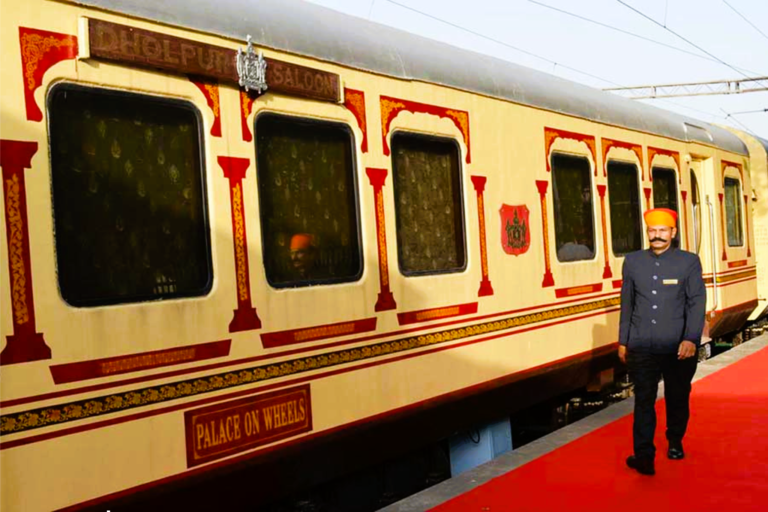India’s rich diversity extends beyond its landscapes and mainstream culture. It is home to an incredible tapestry of indigenous communities, each with distinct traditions, languages, arts, and lifestyles. Exploring India’s tribal cultures offers a glimpse into a way of life that is deeply rooted in nature, spirituality, and community values. Join us as we dive into the vibrant heritage of India’s indigenous communities, discovering unique traditions and customs that have been preserved for centuries.
Key Tribal Communities in India
- Gonds – Central India’s Proud Warriors
- Predominantly found in Madhya Pradesh, Chhattisgarh, and Maharashtra, the Gond tribe is one of the largest tribal groups in India. They have a rich tradition of art, known for their intricate “Gond Art” paintings that depict everyday life, animals, and nature in vibrant colors and patterns.
- Experience: Visit a Gond village and witness the making of traditional Gond art. You can also explore the rich mythology and folklore that these paintings depict, representing their beliefs and stories.
- Santhals – West Bengal’s Traditional Musicians
- Residing mainly in Jharkhand, West Bengal, and Odisha, the Santhals are known for their love of music, dance, and storytelling. The Santhal dance, accompanied by the flute, drum, and other traditional instruments, is a mesmerizing sight.
- Experience: Attend a Santhal cultural festival to witness traditional dances and music performances that celebrate nature and community spirit.
- Bhils – Masters of Archery in Western India
- The Bhil tribe, residing primarily in Rajasthan, Gujarat, Madhya Pradesh, and Maharashtra, are known for their skills in archery. Bhils are also recognized for their traditional “Pithora” paintings, which are similar to cave paintings and reflect their deep connection with nature and spirituality.
- Experience: Visit a Bhil village in Rajasthan or Gujarat to observe their traditional art and learn about their unique rituals and folklore.
- Warli – Artisans from Maharashtra
- The Warli tribe in Maharashtra is famous for its unique style of painting, known as Warli art, characterized by simple yet expressive white patterns on mud walls. Warli paintings depict daily life, animals, trees, and the harmony between humans and nature.
- Experience: Attend a Warli art workshop in Maharashtra, where you can learn how to create these minimalistic yet powerful paintings that tell the stories of rural life and natural harmony.
- Toda – Pastoralists of the Nilgiris
- The Toda community, residing in the Nilgiri hills of Tamil Nadu, follows a pastoral lifestyle, rearing buffaloes and weaving unique shawls known as “Toda embroidery.” Their lifestyle and architecture, with distinct cone-shaped huts, set them apart.
- Experience: Visit the Toda community in the Nilgiris, where you can observe their distinct architecture, explore their pastoral lifestyle, and purchase their intricately embroidered shawls.
Key Aspects of Tribal Life in India
1. Traditional Art Forms
- India’s indigenous communities have preserved various traditional art forms like Gond, Warli, and Pithora paintings. Each art form tells stories of mythology, everyday life, and natural elements, offering insight into their deep connection with nature.
- Tip: Purchase authentic tribal art directly from artisans to support their livelihood and keep these unique traditions alive.
2. Music and Dance
- Tribal music and dance are an integral part of their cultural expressions, often performed during harvest festivals, weddings, and other celebrations. Instruments such as drums, flutes, and traditional percussions accompany lively dances, which reflect joy and gratitude.
- Experience: Attend a tribal festival or cultural event to enjoy these captivating performances, a window into the community’s collective spirit and harmony.
3. Spiritual Beliefs and Rituals
- Many tribal communities follow animistic beliefs, worshipping natural elements like forests, rivers, and mountains. Their rituals and ceremonies are deeply intertwined with their belief in nature’s sanctity and their ancestral spirits.
- Tip: Respect their customs and ask for permission before participating in or observing any rituals. It’s an opportunity to learn and appreciate a worldview that sees nature as sacred.
4. Sustainable Lifestyle and Connection with Nature
- Indigenous communities have a deep-rooted respect for nature, living in harmony with their environment. They practice sustainable agriculture, hunting, and gathering, with an emphasis on preserving natural resources for future generations.
- Tip: Embrace the tribal philosophy of minimalism and sustainability. Many tribal villages offer eco-tourism experiences where visitors can learn about organic farming and other eco-friendly practices.
5. Traditional Handicrafts and Weaving
- Tribal communities are skilled in handicrafts such as pottery, weaving, basket-making, and embroidery. Each craft has a unique style that reflects the identity of the tribe, often passed down through generations.
- Experience: Shop for traditional handicrafts directly from artisans. Look out for Toda embroidery, Santhal jewelry, and bamboo crafts from Northeast India.
How to Respectfully Experience Tribal Culture
When visiting tribal areas, it’s essential to approach with respect and mindfulness. Here are some tips to make your experience respectful and meaningful:
- Seek Permission: Always ask for permission before taking photographs, especially if people are involved. Many tribal communities have strict guidelines regarding photos and videos.
- Dress Appropriately: Dress modestly to respect the community’s customs. This is particularly important when attending cultural events or rituals.
- Support Local Artisans: Purchasing authentic handicrafts and artworks directly from the communities helps support their livelihood and keeps traditional skills alive.
- Hire Local Guides: Local guides are well-versed in the culture and customs of the community. They can help facilitate interactions in a respectful manner and provide context to what you’re observing.
- Stay Eco-Friendly: Tribal communities live close to nature and emphasize sustainability. Avoid littering and respect their environment by minimizing your ecological footprint.
Popular Tribal Tourism Destinations in India
- Bastar, Chhattisgarh
- Bastar is home to the Gond and Muria tribes and is known for its vibrant Dussehra festival, unique handicrafts, and lively dance forms like Gaur dance.
- Highlight Bastar Dussehra, the longest Dussehra celebration in the world, where tribal rituals and customs come alive.
- Nagaland – The Land of Festivals
- The state of Nagaland is inhabited by various tribes, each with distinct traditions. The Hornbill Festival, held in December, showcases the music, dance, and crafts of Naga tribes.
- Highlight: Attend the Hornbill Festival to witness the diversity of Naga culture in one place.
- Gujarat – Rann of Kutch
- The Rann of Kutch is home to various tribal groups like the Rabari, Jat, and Ahir communities, known for their handicrafts and vibrant embroidery work.
- Highlight: Visit the Rann Utsav for a cultural extravaganza, where you can interact with artisans and experience local music and dance.
- Orissa – Bonda and Dongria Kondh Tribes
- Orissa is home to numerous tribal communities like the Bonda and Dongria Kondh, who are known for their distinctive jewelry, weaving, and ancient customs.
- Highlight: Explore local markets to purchase tribal jewelry and handicrafts, and experience the local lifestyle through eco-tourism.
- Andaman and Nicobar Islands – Jarwa and Onge Tribes
- The Andaman and Nicobar Islands are home to several indigenous communities, including the Jarwa and Onge tribes, who maintain a traditional lifestyle close to nature.
- Highlight: Visit eco-tourism initiatives in the islands to learn about the communities without disturbing their habitat.
Discovering India’s tribal cultures offers a unique travel experience that goes beyond the ordinary. By visiting tribal villages, participating in local festivals, and learning about traditional arts, you’ll gain insight into India’s rich heritage and diverse ways of life. Remember to respect their customs, support local artisans, and embrace the teachings of sustainability and harmony with nature. Through mindful and respectful tourism, we can appreciate and help preserve the cultural treasures of India’s indigenous communities.







Give a round of applause in the comments to show your appreciation!